Introduction
The wide f/1.8 aperture makes a return, and this time the model boasts a 16.1 megapixel CMOS sensor. Other than that, the P310 seems pretty much unchanged since its predecessor.
Design & Appearance
{{section_header}}{{section.name}}{{/section_header}}
The P310's appearance is essentially a carbon copy of the P300, with the solitary addition of a new Fn button on the front panel. It's a spartan, modern aesthetic that will appeal to some and bore others. This model has only been announced in black, however we spotted a white model on the show floor.
Tour
{{section_header}}{{section.name}}{{/section_header}}




Menu
{{section_header}}{{section.name}}{{/section_header}}
As far as the actual design and layout of the menu, this is entirely unchanged from the P300.
Ease of Use
{{section_header}}{{section.name}}{{/section_header}}
The user experience is quite similar to P300's, which means it's aimed at a more experienced user who's comfortable enough to take advantage of the Tv, Av, and manual shooting modes. The control dial on top of the body makes menu navigation very easy, though the multitude of available options will delay first-time users. The rear directional pad doubles as a rotating dial, just like the P300, adding some flexibility to the control scheme.
The new Fn button makes accessing the most common options easier, and this button will be within reach for most hands, even though it's located on the front panel.
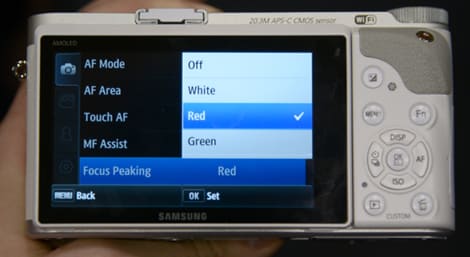

Size & Handling
{{section_header}}{{section.name}}{{/section_header}}
Again, save for the new Fn button, physical handling of the P310 is identical to the P300.

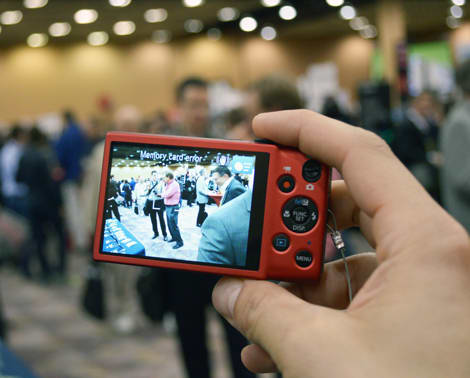
Modes Overview
{{section_header}}{{section.name}}{{/section_header}}
The P310 features a hardware mode dial with options for all four "PASM" shooting modes, as well as a fully customizable mode that stores user settings, a dedicated Scene mode setting, and even a dedicated picture effects mode. For beginners, a fully automatic "green" mode has also been included.

Auto Mode
{{section_header}}{{section.name}}{{/section_header}}
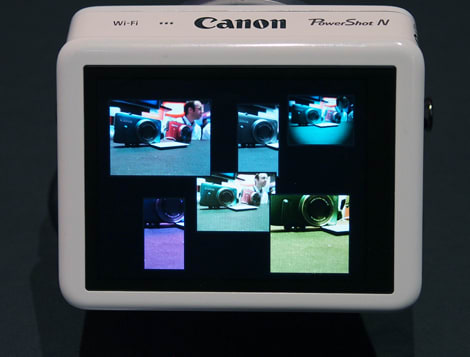
Movie Mode
{{section_header}}{{section.name}}{{/section_header}}
This is a 1080p video device but a number of other resolutions are available too, including 720p and iFrame formats. All video clips are stored in H.264 and captured at 30 frames per second.
Drive/Burst Mode
{{section_header}}{{section.name}}{{/section_header}}
Burst mode maxes out a 7 frames per second for 5 shots, which is a step down from the P300 in both speed and buffer size. That's no surprise, given the upgrade to resolution, and should be sufficient for many shooting scenarios. The P310 also offers high speed video capture at up to 120 frames per second, though this will severely limit resolution.
Playback Mode
Picture Quality & Size Options
{{section_header}}{{section.name}}{{/section_header}}
Maximum resolution is 4608 x 3456 pixels however, unlike the competitive PowerShot S100, lossless RAW encoding is not supported.
Focus
{{section_header}}{{section.name}}{{/section_header}}
Like most cameras of this size, contrast detection is used for autofocus. Five area selection methods are available: 9-area Auto, Center, Face, Manual, and Subject tracking. Full manual focus is not supported.
Autofocus performance seemed fairly quick and responsive, even under the show floor's tricky lighting. Nikon has somehow managed to improve macro focus to function within 2cm, despite using the same lens. In practice, it was difficult to lock focus at 2cm, but it did seem possible.
Exposure & Metering
{{section_header}}{{section.name}}{{/section_header}}
Aperture range is one of the key selling points of this camera, and it extends from f/1.8 - 4.9. That's impressive for a camera this size, though no better or worse than the P300 before it. In fact all exposure and metering features are precisely identical to the P300.
ISO
{{section_header}}{{section.name}}{{/section_header}}
Nikon is marketing the P310 as an ideal camera for low light, and thanks to the bright lens, this is probably true. But ISO options have barely changed at all. The maximum value is still 3200, and there's still an extended mode than can achieve an equivalent of ISO 6400. Only the minimum ISO has changed, it's now 100, down from 160.
White Balance
{{section_header}}{{section.name}}{{/section_header}}
White balance has received a very slight upgrade over the P300. Instead of only automatic and manual modes, a number of presets have been included: Cloudy, Daylight, Flash, Fluorescent, and Incandescent.
Image Stabilization
{{section_header}}{{section.name}}{{/section_header}}
The P310 will take advantage of the same lens-shift vibration reduction found in the P300.
Picture Effects
{{section_header}}{{section.name}}{{/section_header}}
A wide selection of scene modes have been pre-programmed into the P310, including Back Light, Beach, Close Up, Copy, Dusk/Dawn, Fireworks Show, Food, Landscape, Museum, Night Portrait, Panorama Assist, Party/Indoor, Pet Portrait, Portrait, Scene Auto Selector, Snow, Sports, Sunset, and 3D Photography.
Lens & Sensor
{{section_header}}{{section.name}}{{/section_header}}
The P310 boasts a brand new sensor with an effective megapixel count of 16.1 million. This is a 1/2.3 inch CMOS model, and a big step up over the P300's 12.1 megapixel unit. The exact same lens is in use this time around though, and it's capable of 4.2x optical zoom, plus that amazingly wide f/1.8 aperture.

LCD
{{section_header}}{{section.name}}{{/section_header}}
The same 3.0-inch, 921,000-dot LCD used in the P300 makes a return here. This is a fixed LCD, meaning it doesn't tilt or swivel.

Flash
{{section_header}}{{section.name}}{{/section_header}}
Flash design and performance is identical to the P300.

Jacks, Ports & Plugs
{{section_header}}{{section.name}}{{/section_header}}
Are we noticing a theme yet? Both output terminals are identical to the P300.
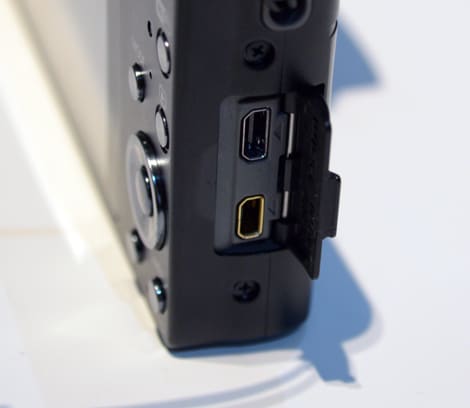
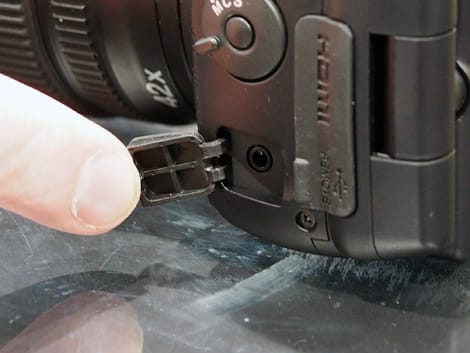
Battery
{{section_header}}{{section.name}}{{/section_header}}

Memory
{{section_header}}{{section.name}}{{/section_header}}
Like the P300, the P310 is compatible with SD, SDHC, and fast SDXC memory cards. 90 MB of internal memory have also been included, but this is really only enough for a few shots.

Conclusion
Just as the P300 took up a market position directly below Canon's S95, the P310 is positioned directly below the S100. The last time Nikon tried this strategy, it didn't really work out. And given how precious-little has changed for the P310, we're not sure it's going to work out this time either.
Which is not to say the P310 doesn't appear to be a solid camera. The control scheme is excellent, the feature set makes sense, and that f/1.8 lens is very desirable. We're just not sure there's an "in-between" market for this camera. Image quality could make a huge difference here, but until we take it into the lab, there's no way to know. As it stands now, we're iffy about the Coolpix P310.
{{product.vanity}}
Sample Photos
{{section_header}}{{section.name}}{{/section_header}}
Specs
{{manufacturer_specs_table}}
Meet the tester
Chris was born and raised less than ten miles from our editorial office, and even graduated from nearby Merrimack College. He came to Reviewed after covering the telecom industry, and has been moonlighting as a Boston area dining critic since 2008.
Checking our work.
Our team is here to help you buy the best stuff and love what you own. Our writers, editors, and experts obsess over the products we cover to make sure you're confident and satisfied. Have a different opinion about something we recommend? Email us and we'll compare notes.
Shoot us an email